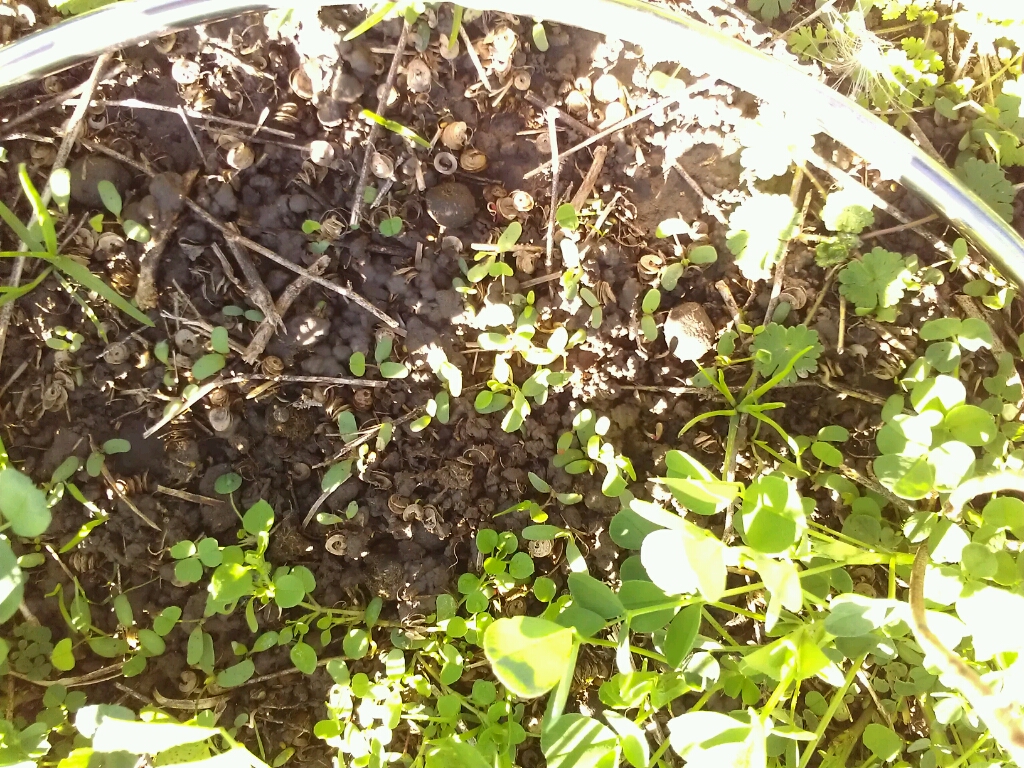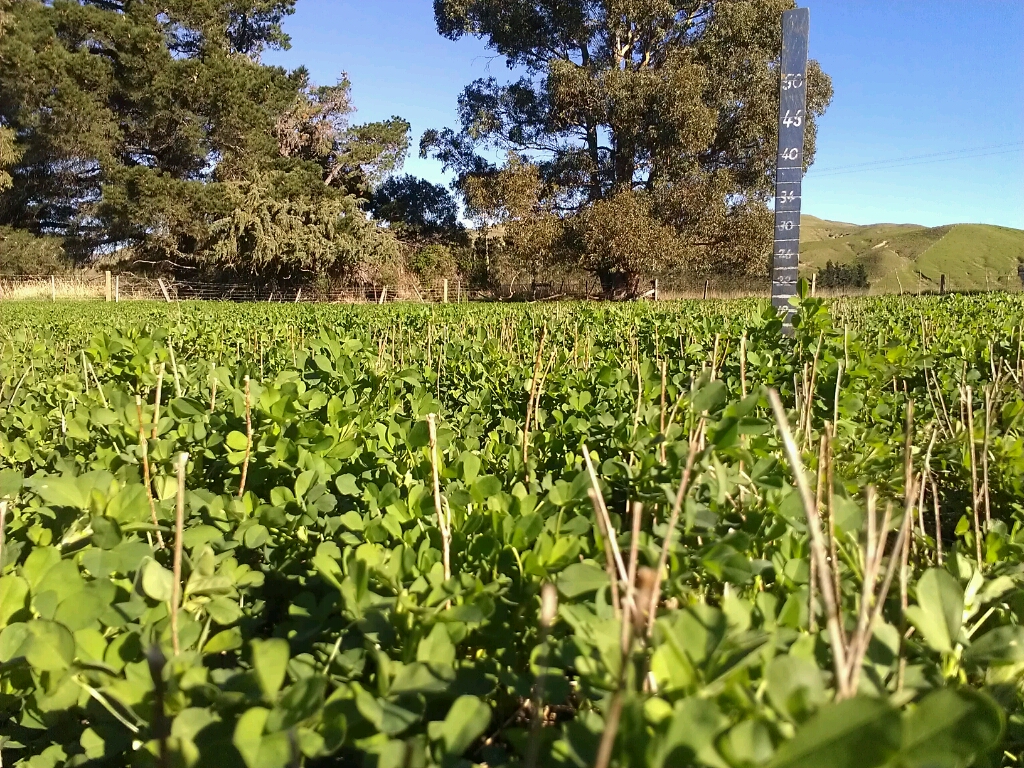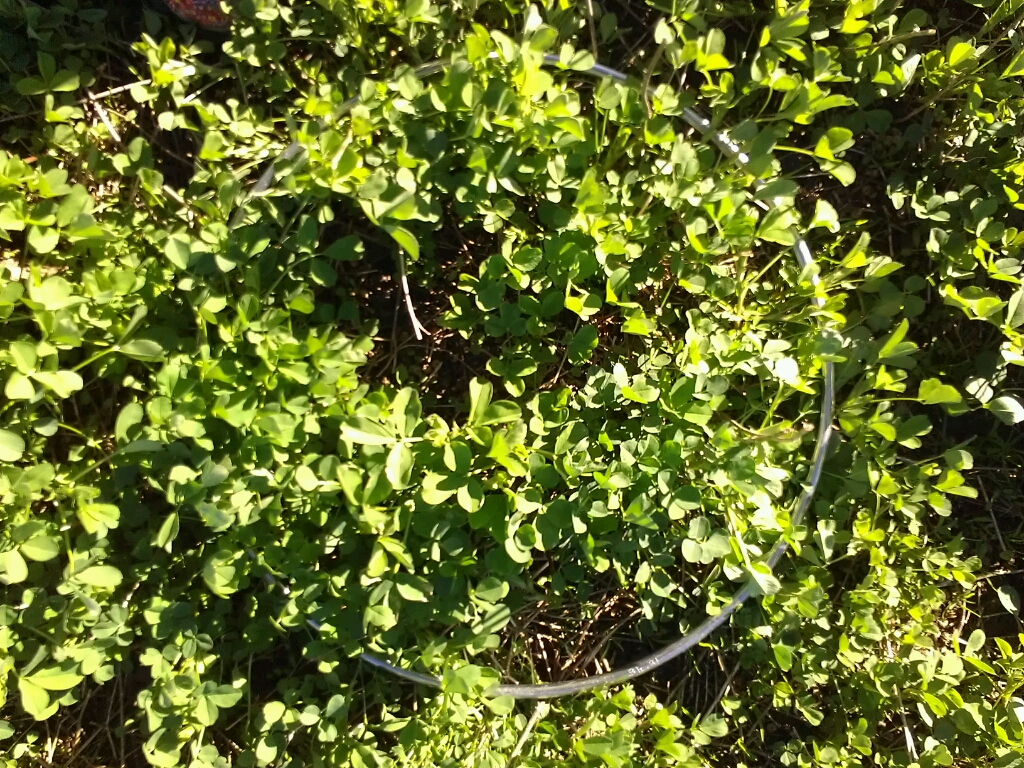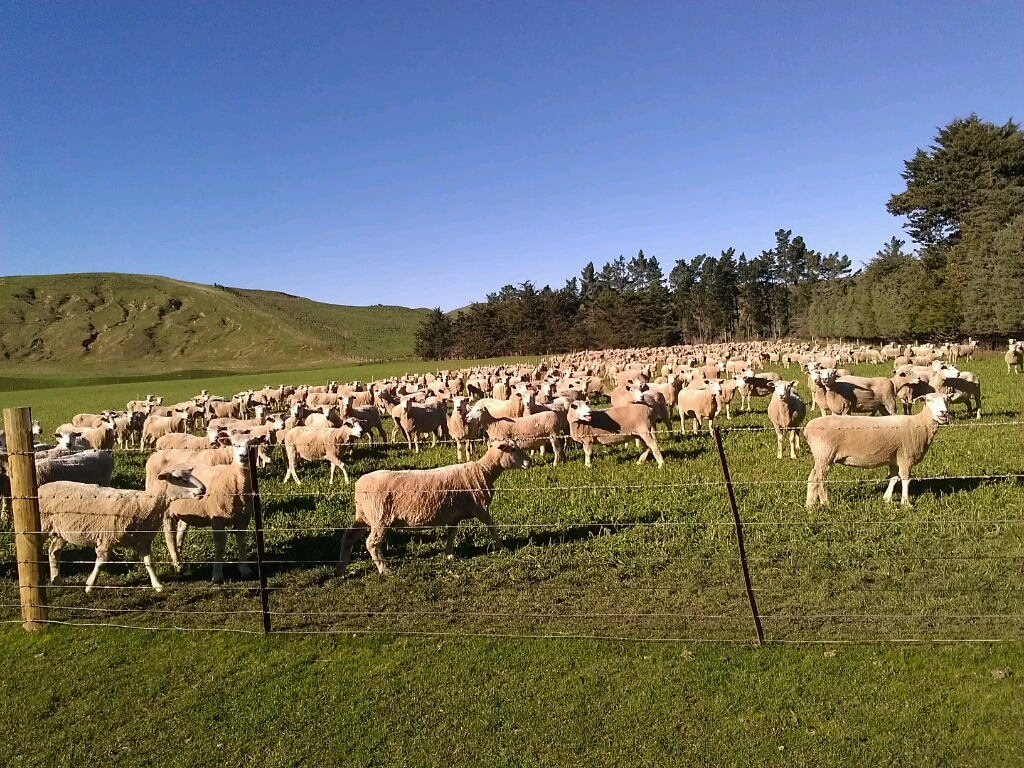The countdown to lambing is on at Bonavaree when I visited in late May. Doug and Fraser have had a really successful year with Jeffries Front Flat, and it is still looking like a productive paddock that is geared to produce well again this spring.
Seed Harvest
The lucerne seed harvest from this paddock was hampered by rain when it was harvested in late April this year. It is common to harvest lucerne seed at the end of April in Marlborough, and sometimes Mother Nature throws a curveball (just to make it interesting). Fraser has found, that in a well-established mature lucerne crop, rain events leading up to the harvest are utilised for seed fill, rather than vegetative growth. Dessication of the crop using chemicals such as Diquat prior to harvest is therefore not required. The field dressed yields from the paddock were approximately 750kg/ha and with a machine dressed yield of 700kg/ha which has shown that the rain has had little effect on the yield. The seed sample coming from this paddock had been very clean, as can be seen by the low amount of 2nds and offal that was dressed out from the field dressed yield. It is so important to have a clean crop to start with, with minimal/preferably no, weeds present (especially important if you are growing a certified seed crop). To retain certification, the seed must reach minimum purity and germination specifications and also be free of a lengthy list of undesirable weed seeds. The combine harvester used must be set up properly to ensure a clean sample is harvested, the harvester operator should also be reliable and experienced with small/herbage seed harvesting. The Avery’s use the same trusted operator each year (Mike, who works at Bonavaree throughout the year). The headers that are used are not late model, but are set up properly and do an extremely effective job. In spite of the rain that occurred coming up to harvest, the purity and germination tests have come back with very good scores, and more than reached the minimum specifications for certification.
You can see in the photo below that some of the seed didn’t make it into the bags, and has established a number of seedlings in the small amount of bare patches between the mature plants. This is normal to get some shattering of seed to the ground, and would have been a result of drying and wetting cycles on the lucerne seed pods from the frequent rains. The seedlings below are unlikely to establish fully to mature plants, but we will see if they are still present at my next visit.

The rest of the paddock is looking great with good growth since the harvest. The plant numbers were good with minimal areas of bare ground or weeds, and the sward height was approximately 20cm (see photos below).


Lamb on Jeffries Front Flat?
Fraser was debating whether to use this paddock for lambing ewes again this season, as it is such a sheltered paddock that has performed well in the past when used for lambing. Or to graze it off in the next couple of days and then spray out the weeds. Scanning has gone extremely well this year with the same number of Triplets and Quads to the number of singles. Twin bearing ewes are also in high numbers this year. The Highlander ewes are large framed sheep with long bodies (see photos below) but are extremely productive and this is testament to the year round feeding regime on offer at Bonavaree. The ewes pictured below were behind a wire on Lucerne and Prairie grass, and insisted they were due for a new shift when we drove past, although the amount of feed they were on looked to be more than adequate. It shows they are used to great quality feed, and plenty of it!

We will cover the decision of using this paddock to lamb-on in our next blog…coming soon!
- Key Bonavaree messages:
Work hard to control weeds in seed crops, the end result is a good quality, clean sample that meets purity specifications and has lower seed cleaning costs. - Use a reputable and experienced harvester operator, it is an extremely good investment!
- Plan well ahead for your lambing feed requirements, this is imperative when scanning indicates high foetal numbers.
